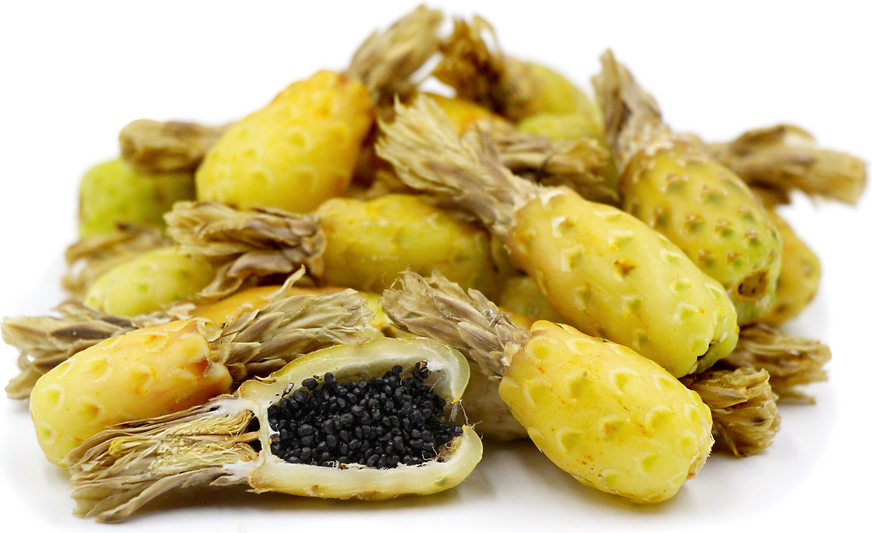


Barrel Cactus Fruit
Estimated Inventory, bskt : 0
Description/Taste
Some Barrel cactus can reach heights as tall as 3 meters with stout ribs covered in dense clusters of spines. In spring time most species develop a beautiful crown of yellow-green or red flowers that encircle the top of the stem. These blossoms give way to small oblong shaped fruits with a golden pinkish exterior, topped with the remnants of dried petals. Their fleshy yellow interior surrounds a cavity that is filled with small black seeds, much like poppy seeds. The fresh fruit is tart and lemony with hints of rose and guava, while the seeds impart a neutral nutty flavor.
Seasons/Availability
Barrel cactus fruit is foragable year-round, but fresh in the summer and fall.
Current Facts
The Barrel cactus is of the Cactaceae family in the genus Ferocactus which is Latin for “fierce cactus,” alluding to the plant’s numerous and unrelenting stiff spines. There are at least 15 species of Barrel cactus that bloom in the spring and then later develop small fruits that have a curious resemblance to miniature pineapples. The fruit of the Barrel cactus is a desert foraging treat, but should be collected with great care and respect as many of the species are protected or endangered.
Nutritional Value
Barrel cactus fruit is rich in vitamin A and vitamin C. Its pulp can be applied externally as an analgesic.
Applications
The fruit of the Barrel cactus is best prepared in sweet applications, since its natural tartness lends itself well to a hint of sugar. Cook the fruit down with agave syrup to make a jam, jelly or a sweet and sour chutney. The fresh fruit can also be added to baked goods like cake batter or used raw in salads and salsas. Once the fruit has dried, the tiny black seeds can be ground into a flour or added whole into crackers, breads, hot cereal, granola, soups and smoothies.
Ethnic/Cultural Info
Native American tribes across the American Southwest have relied on foraged Barrel cactus fruit as an important food source during the sparse and desolate summer months. The Barrel cactus should not be used as a drinking water source, though it is said that the Seri Indians sometimes resorted to it in extreme emergencies, but often incurred diarrhea and painful body aches. They referred to it as the “barrel that kills” because of the nausea, diarrhea, and temporary paralysis that it caused.
Geography/History
The Barrel cactus is native to North America, specifically the southern deserts of California, Arizona, New Mexico and Texas, as well as parts of Mexico. They usually grow along desert washes, gravely slopes and beneath desert canyon walls in hot dry climates.




